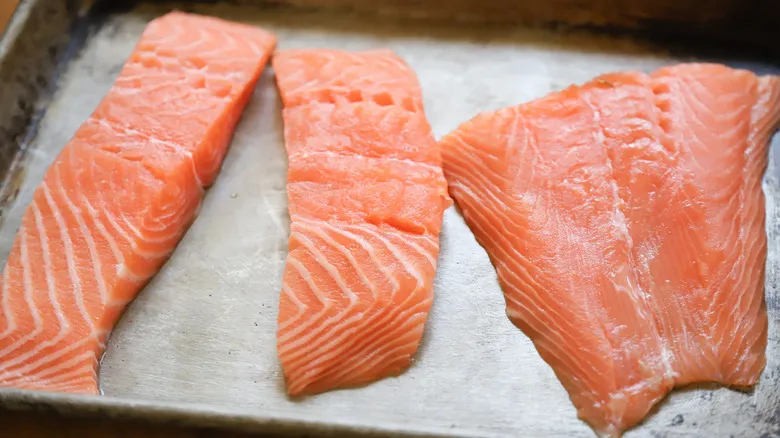Method 1: Roast and broil
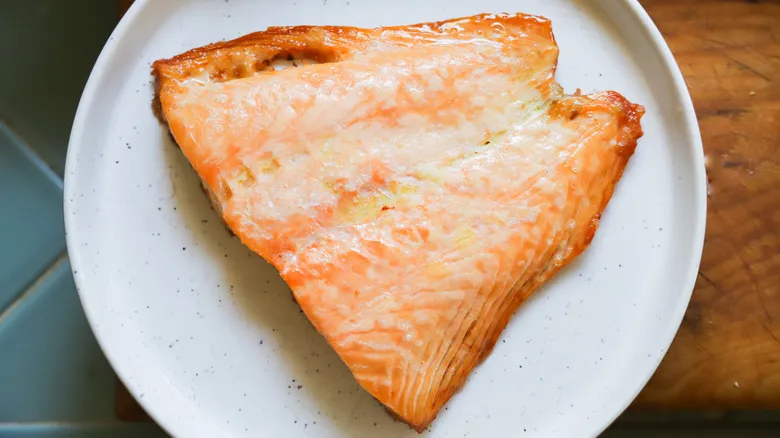
One of the easiest and most effective methods for baking salmon is by using a combination of roasting and broiling. Roasting cooks the salmon quickly while keeping it moist, and broiling enhances the caramelization of the filet, adding flavor and a delightful crispness to the edges.
Start by preheating your oven to 400°F.
Then, drizzle olive oil onto a baking sheet.
Place the salmon on the sheet.
Season the salmon with salt and any other spices you prefer. Roast it until it is nearly cooked through, which should take around 15 minutes.
After that, switch on the broiler and broil the salmon for an additional 2-3 minutes. Once the salmon starts to caramelize and the edges become crispy, it’s ready to be served.
Method 2: Add a crispy crust then bake
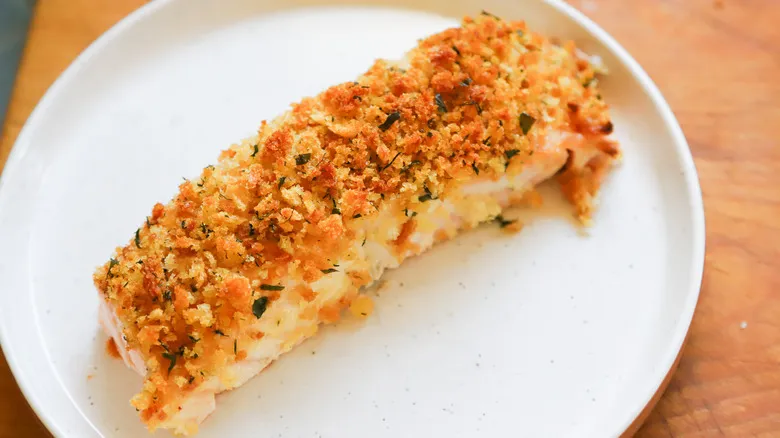
An alternative method for baking salmon that is both delicious and visually appealing is to add a crispy coating. There are numerous ways to prepare salmon this way, ranging from a straightforward Dijon-crusted version to a Mediterranean pesto-crusted option. The benefit of this technique is that it allows you to cook the salmon gently without risking dryness, while also providing a delightful crunch from the crispy crumbs. If you prefer to make it without a specific recipe, here’s our preferred approach.
As before, preheat your oven to 400°F.
Next, create a simple adhesive mixture, such as Dijonnaise. In this example, we combined 1 tablespoon of mayonnaise, 1 teaspoon of Dijon mustard, and 1 teaspoon of lemon juice. You can use any glaze or sticky mixture suitable for breading at this stage.
Using a spoon or a rubber spatula, evenly spread the adhesive mixture over the salmon fillet.
Next, coat the fillet with breadcrumbs. You can use a store-bought seasoned breadcrumb blend or make your own variety.
Bake until the breadcrumbs are golden brown and the salmon is fully cooked, which should take about 15 to 16 minutes. Allow it to rest for a few minutes before serving.
Method 3: Bake with a glaze

The third method for baking salmon in the oven involves using a glaze. A glaze is a sauce that contains a higher sugar content, which can be achieved with sugar, honey, agave, or even fruit juice. The sugar initiates the Maillard browning process, resulting in a delightful texture and a beautiful golden brown color for the salmon. Baking salmon with a glaze doesn’t require much additional time in the oven, so start checking it after about 15 minutes.
Once again, preheat the oven to 400°F. While the oven is warming up, brush your salmon fillet with the glaze.
Place the salmon in the oven and bake for 15-16 minutes.
When the glaze has caramelized and the fillet has reached an internal temperature of 145°F, it’s ready. Remove it from the oven, allow it to rest for a few minutes, and then serve.
What should you serve with salmon?
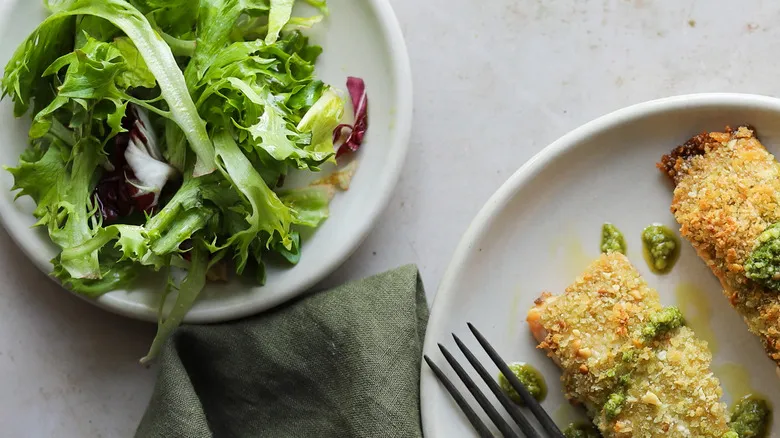
Salmon is an incredibly adaptable protein that pairs well with a variety of side dishes. For a simple baked salmon, you might consider options ranging from potatoes to rice pilaf or grilled zucchini. A basic green salad or a more elaborate panzanella featuring green beans and tomatoes are both fantastic choices. If you decide to bake your salmon fillets with an Asian-inspired glaze, a warm serving of steamed rice and sautéed broccoli would round out the meal nicely. Alternatively, you could go for a chilled noodle salad or marinated cucumbers tossed with rice vinegar and toasted sesame seeds.
For crispy, crusted baked salmon, as discussed in this article, it's best to complement it with simpler sides. Consider roasted asparagus drizzled with just olive oil and salt, or a fresh salad of shaved raw carrots.
Storing your baked salmon
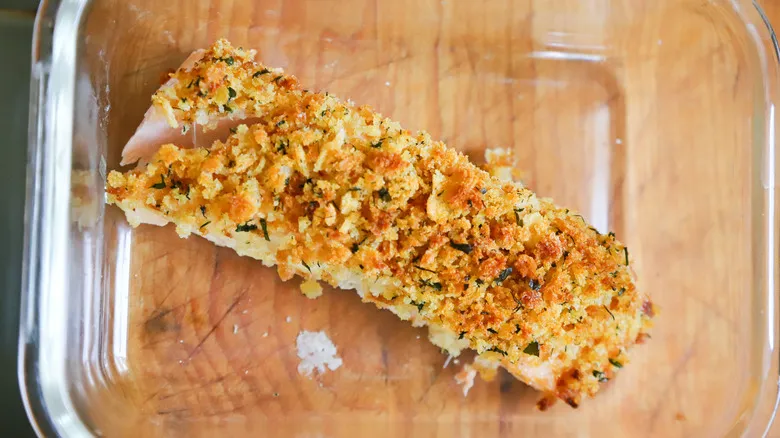
If you're putting in the effort to prepare perfect and impeccable salmon, you might want to consider making extra so you can savor it as leftovers in the following days. To achieve this, it's essential to store the salmon properly. The ideal method is to place the fillet in an airtight container and refrigerate it at 40°F or below (but above freezing). Using this technique, the salmon will remain safe to eat for up to three days.
Be sure to refrigerate the salmon within two hours after cooking. If it sits out longer, it can enter the temperature danger zone, significantly increasing the risk of bacterial growth. If you plan to freeze cooked salmon, wrap it tightly in plastic wrap or place it in an airtight container, minimizing air exposure to prevent freezer burn.
How should you reheat leftover salmon?
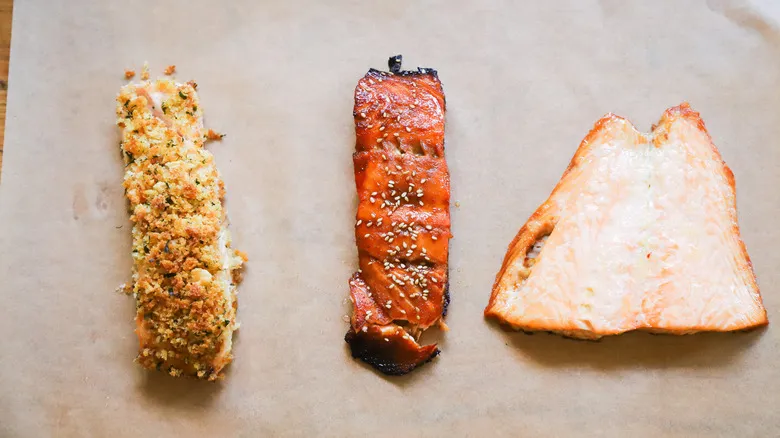
If you've stored salmon for later consumption, you may be curious about the best way to reheat it. Generally, the simplest and most effective method is to place the salmon on a fresh piece of foil and bake it in the oven at a lower temperature than it was originally cooked. Preheating the oven to 275°F is ideal, as it warms the fish without risking overcooking.
Alternatively, you can use a microwave to reheat salmon, but keep in mind that this method may negatively impact the texture and could create hot spots in the fish. If you choose this option, cover the salmon and heat it in 30-second intervals until it reaches your desired temperature or doneness.
Regardless of the method you select, ensure that the salmon is reheated to an internal temperature of at least 145°F.
Recommended
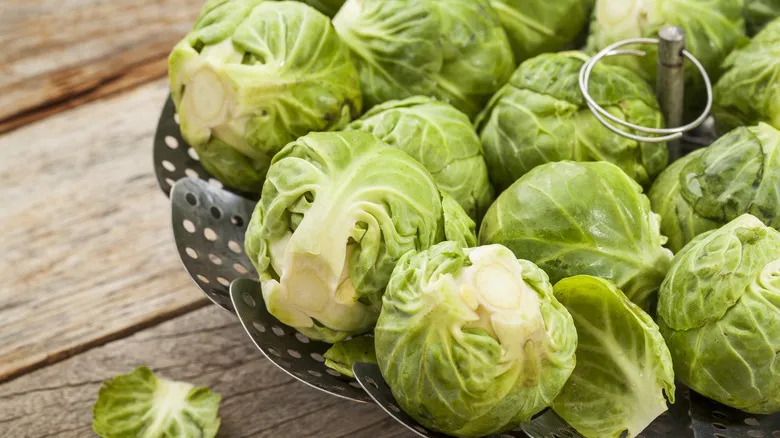
You Don't Need A Dedicated Steamer Pot. Here's What To Use Instead

How To Make Fool-Proof Nachos For Any Game Day
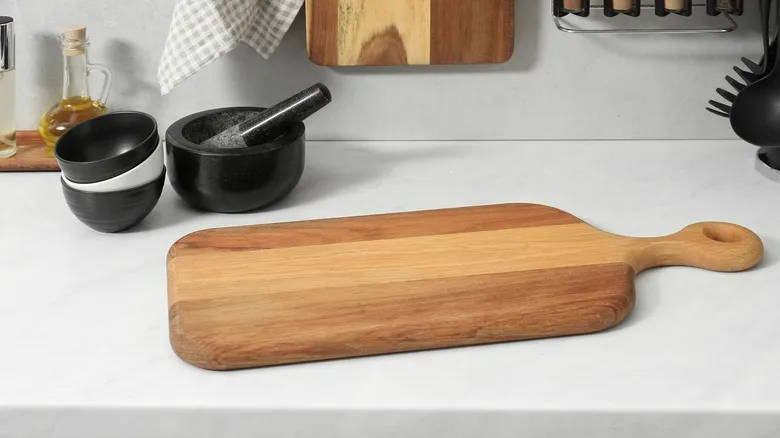
How To Clean A Wooden Cutting Board So It Doesn't Warp
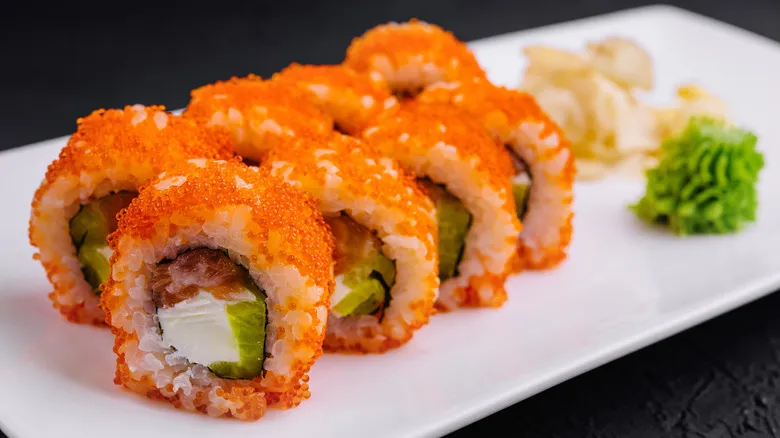
What Is Masago And How Do You Eat It?
Next up

